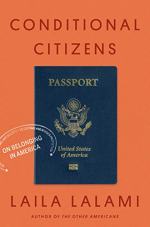
|
| Name: _________________________ | Period: ___________________ |
This test consists of 15 multiple choice questions and 5 short answer questions.
Multiple Choice Questions
1. What are some reasons Lalami cites for the Muslim religion being virtually erased after enslaved Muslims were brought to the U.S.?
(a) Schools were banned from teaching about the history of Muslims in America.
(b) All Muslims were later sent back to their homeland.
(c) Enslaved Muslims were forced to give up their religion and their names were changed.
(d) Muslims did not discuss their religion openly.
2. In "Assimilation," Lalami cites a New York Times article complaining that Chinese people do not assimilate like other cultures did. What year was this article published?
(a) 1890.
(b) 2009.
(c) 1990.
(d) 1790.
3. Why did residents of Arivaca, Arizona set up a watch group at a border, according to Lalami in "Borders"?
(a) Because of an increase in racial profiling.
(b) To help immigrants cross over illegally.
(c) To stop illegal border crossings.
(d) To help the border agents because they lost funding.
4. At the end of "Allegiance," Lalami says that the place where she received her citizenship was used for what during World War II?
(a) Military training.
(b) Japanese internment.
(c) Making weapons.
(d) It served as a food pantry.
5. After Operation Hold the Line apprehensions at the border decreased, what increased?
(a) The number of people applying for citizenship.
(b) The number of visa applicants.
(c) The number of nearby illegal crossings.
(d) The number of people applying to be border patrol agents.
6. In "Assimilation," what example did Lalami's airplane seatmate give of Koreans in Gardena, California refusing to assimilate?
(a) Koreans still dress like they do in Korea.
(b) Korean families send their kids to school to learn Korean.
(c) Koreans refuse to eat American cuisine.
(d) Koreans refuse to socialize with Americans.
7. In "Borders," Lalami writes that the Melilla border wall separates what?
(a) Americans from Moroccans.
(b) Good people from bad people.
(c) French people from Moroccan people.
(d) White people from Black and brown people.
8. In what year was the first mosque built in America after Syrian and Lebanese homesteaders arrived in the country?
(a) 1865.
(b) 2003.
(c) 1929.
(d) 1986.
9. In "Borders," what example does Lalami cite of the increasingly divisive rhetoric coming from the Trump administration in regards to border walls?
(a) A border wall would separate the educated from the uneducated.
(b) A border wall would separate bad laws from good laws.
(c) A border wall would separate decent people from criminals.
(d) A border wall would separate cleanliness from pollution.
10. In "Assimilation," what reason does Lalami cite for why enslaved peoples were not taught to read?
(a) There were no teachers available.
(b) They showed no interest in learning to read.
(c) It was believed that literacy would lead to rebellion.
(d) They already knew how to read.
11. What religion was Lalami's mother forced to follow after being sent to an orphanage after her parents died?
(a) Hinduism.
(b) Judaism.
(c) Catholicism.
(d) Islam.
12. What country ruled Morocco when Lalami's mother was born in 1941?
(a) Portugal.
(b) Spain.
(c) France.
(d) The United States.
13. What did Glenn Beck ask of Muslim-American politician Keith Ellison when he spoke about ending the war in Iraq?
(a) Glenn Beck asked Keith Ellison to prove he was not working with the terrorists.
(b) Glenn Beck asked Keith Ellison to go back to his own country.
(c) Glenn Beck asked Keith Ellison to explain how the war could be safely ended.
(d) Glenn Beck asked Keith Ellison to give him three good reasons the U.S. did not belong in Iraq or Afghanistan.
14. What does Lalami say she observed in Marfa, where she arrived after being stopped at the Sierra Blanca border?
(a) Border agents were everywhere.
(b) The community actively protested the border wall.
(c) People did not know there were checkpoints throughout the United States.
(d) Despite the border wall the town was full of immigrants.
15. In "Allegiance," what does Lalami say contradicted Bush's claim that the Islam faith is not "the face of terror"(14)?
(a) His policy deporting Muslim citizens in the U.S.
(b) His policy banning of Muslim internationals.
(c) His administration's attempt to close down mosques.
(d) His declaration that if you were not with the U.S. you were against us.
Short Answer Questions
1. What famous American was one of the most vocal in questioning Obama's citizenship?
2. Where was Lalami and what was she doing when she was handed a flyer by the Muslim Public Affairs Council to vote for George W. Bush?
3. In "Borders," what does Lalami say grew after Spain transitioned from a dictatorship to a democracy starting in 1975?
4. Lalami suggests that a common American perception that Arabs and Muslims are inferior comes from what source?
5. Which Al Quaeda leader did Al-Khalayalah join after his release from prison in 2001?
|
This section contains 814 words (approx. 3 pages at 300 words per page) |

|




